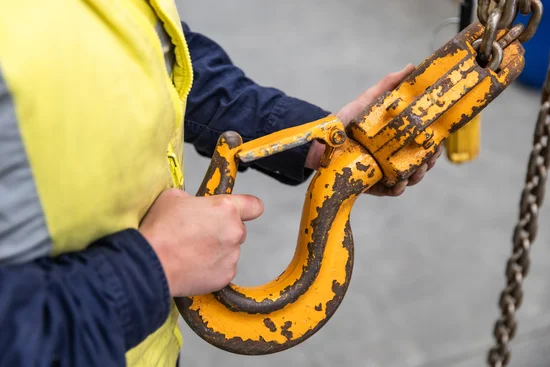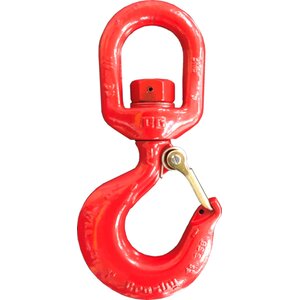Every component ensures efficiency and safety in the intricate choreography of lifting and rigging operations. Among these components, swivels and hooks are indispensable assets, contributing significantly to the smooth execution of lifting tasks. This Know How article will explore their pivotal roles and importance in lifting operations.
Best Practices for Utilising Swivels and Hooks
- Regular Inspection: Like any other lifting equipment, swivels and hooks require routine inspection for wear, deformation, or any signs of damage. Any compromised component should be promptly replaced to maintain safety standards.
- Proper Maintenance: Ensure proper lubrication and upkeep of swivels and hooks according to manufacturer guidelines. This practice prolongs their lifespan and guarantees optimal functionality.
- Load Capacity Awareness: Always operate within the specified load capacities of swivels and hooks. Overloading these components can lead to catastrophic failures and compromise safety.

Swivels: Facilitating Flexibility and Precision
- Enhanced Maneuverability: Swivels connect various elements of a lifting setup, allowing for rotational movement. This capability aids in the alignment of loads and prevents twisting of slings, enhancing overall maneuverability during lifting procedures.
- Reducing Stress and Wear: By permitting rotational movement, swivels help minimise stress on lifting slings and cables. This stress reduction not only prolongs the lifespan of these components but also mitigates the risk of tangles or kinks that could compromise the safety of the operation.
- Versatility in Applications: Swivels come in various designs, catering to specific needs in lifting operations. Whether heavy-duty lifting or delicate maneuvers requiring precision, selecting the appropriate swivel type ensures optimal performance and safety.
Hooks: Anchors of Security and Reliability
- Secure Load Attachment: Hooks are a critical link between the lifting equipment and the load. Their design and strength determine the secure attachment of the load, ensuring it remains steadfast throughout the lifting process.
- Diverse Configurations: Hooks are available in many configurations to suit different lifting requirements. Whether a simple eye hook or a specialised latch hook, selecting the right hook for the job is imperative for safe and efficient operations.
- Safety Mechanisms: Many modern hooks come equipped with safety features such as latch mechanisms or self-locking systems, preventing accidental detachment of the load and adding an extra layer of security to the lifting process.
In lifting and rigging operations, swivels and hooks are fundamental components that contribute significantly to the overall efficiency and safety of the process. Their role in ensuring secure connections, enhancing maneuverability, and minimising stress on lifting equipment cannot be overstated. Remember, investing in high-quality swivels and hooks, with meticulous maintenance and adherence to safety protocols, is integral to a successful and secure lifting operation, ensuring both efficiency and the well-being of personnel and the protection of valuable assets.




